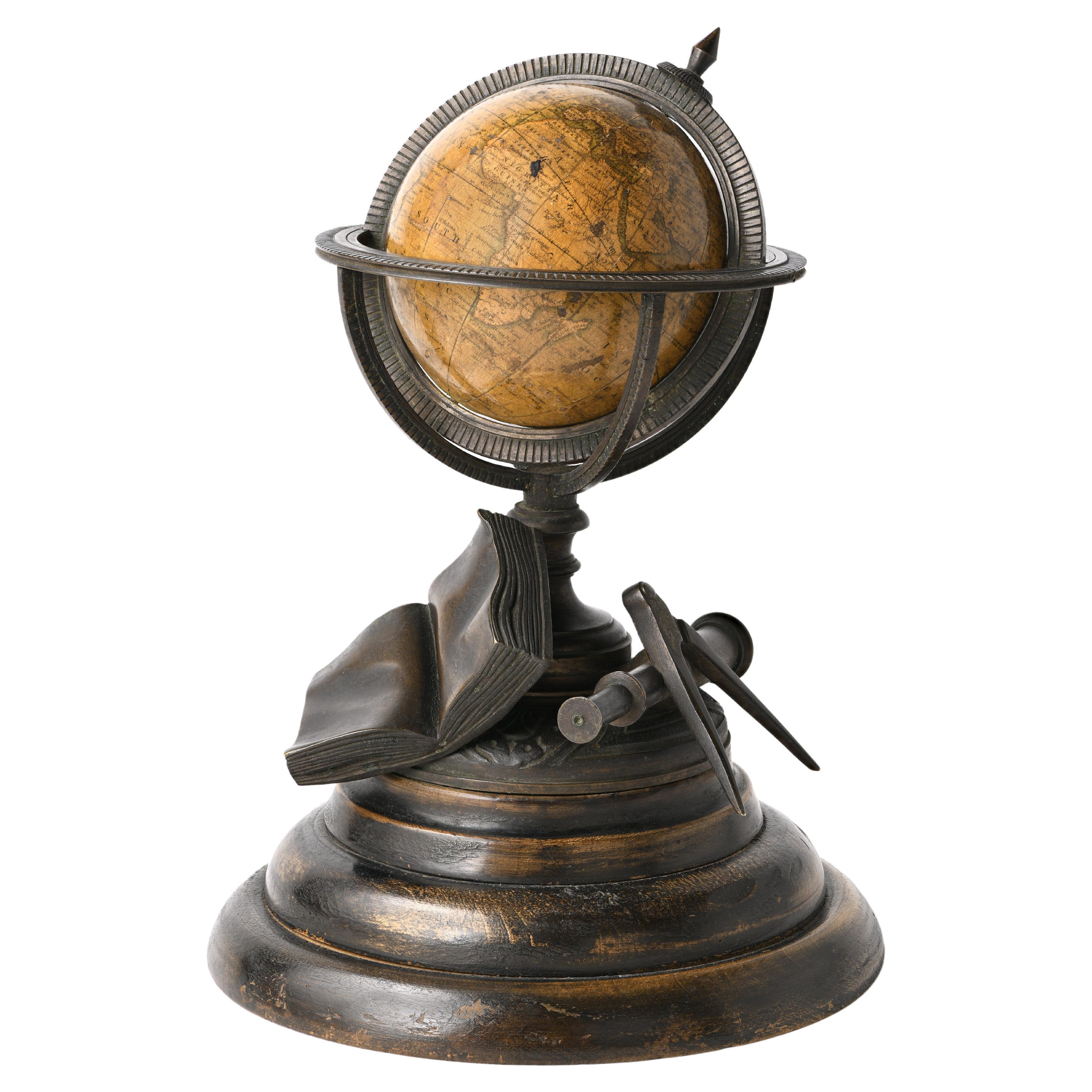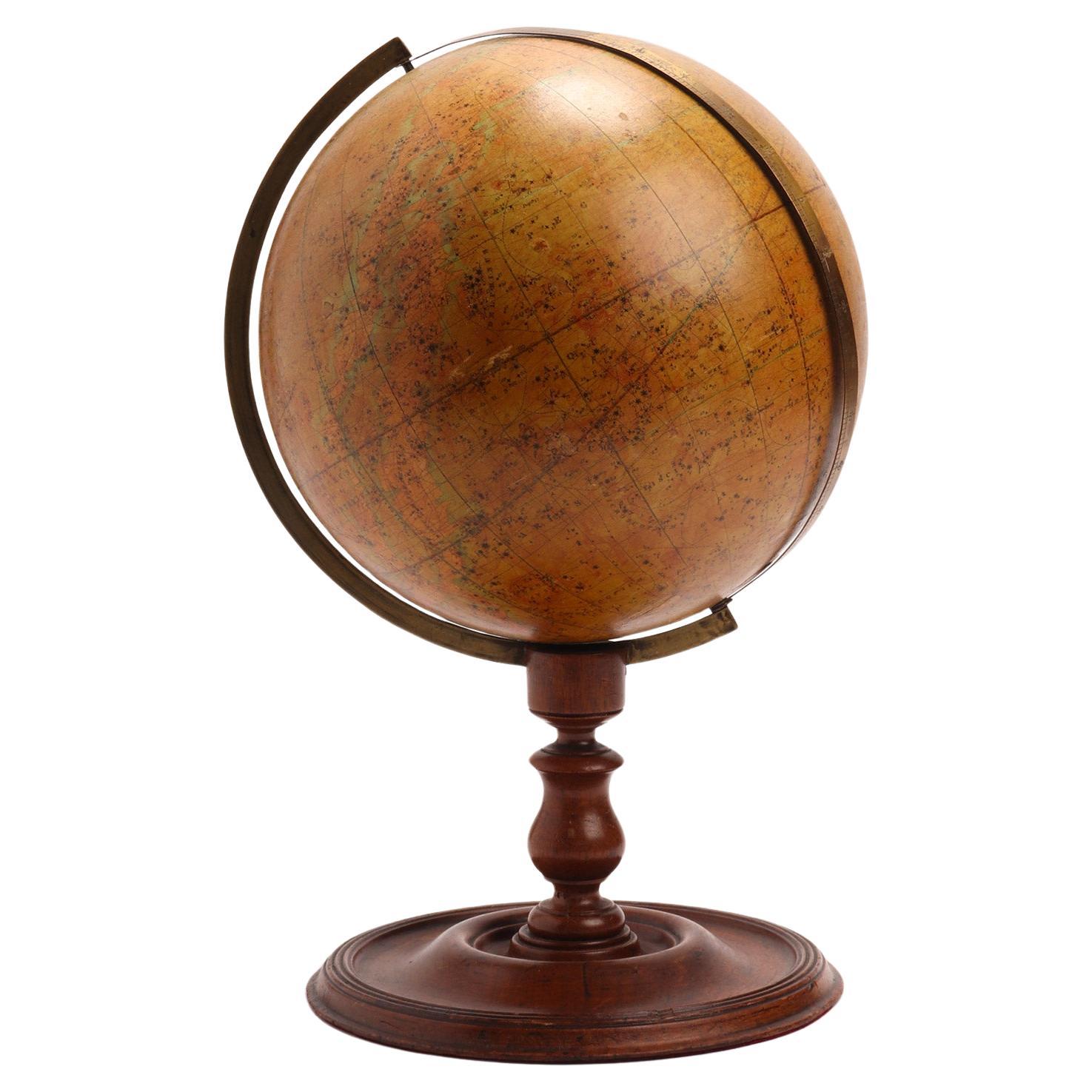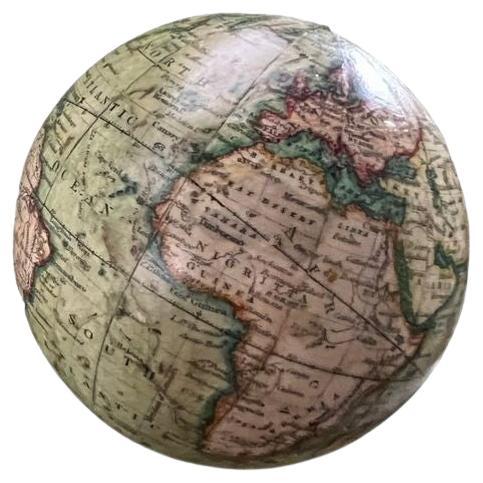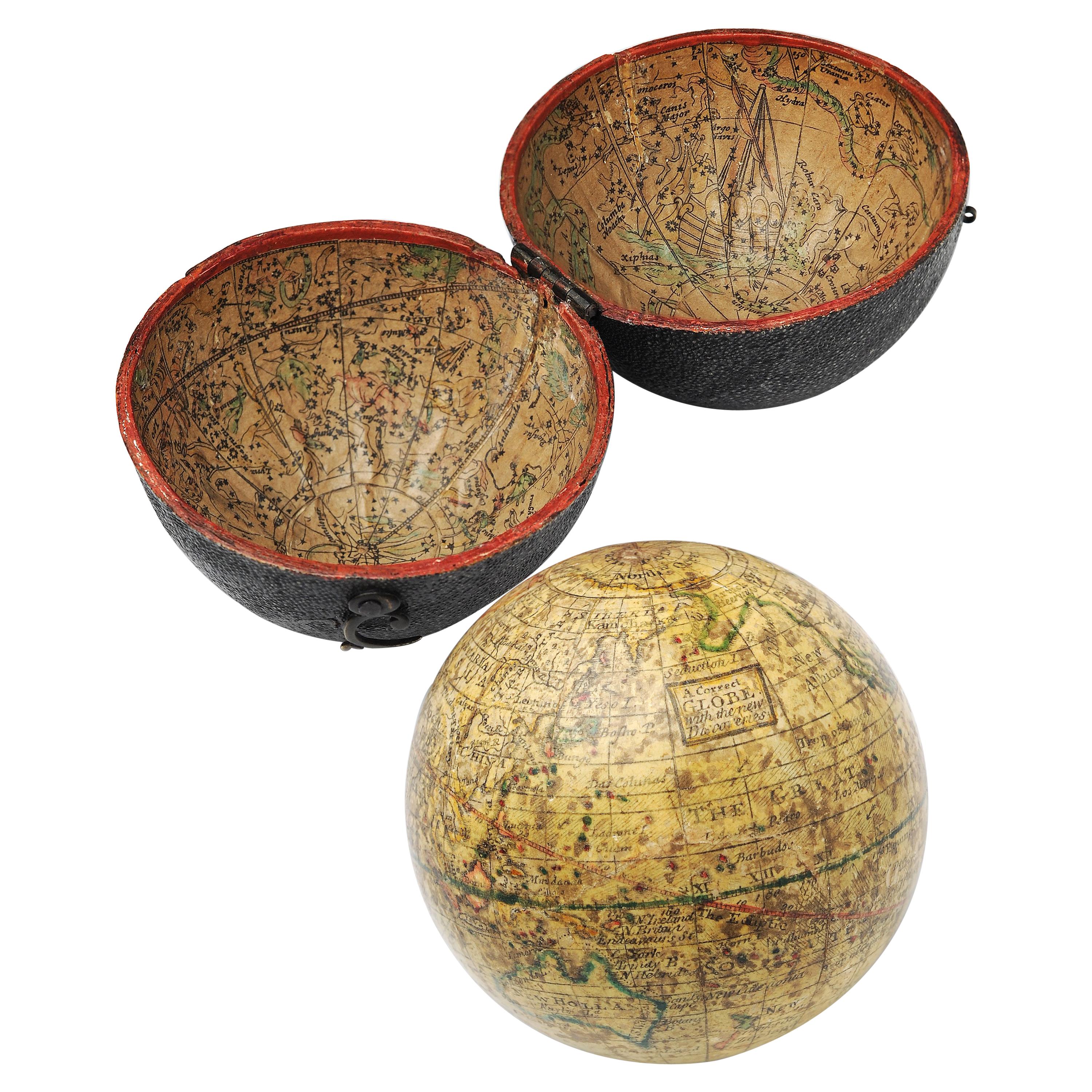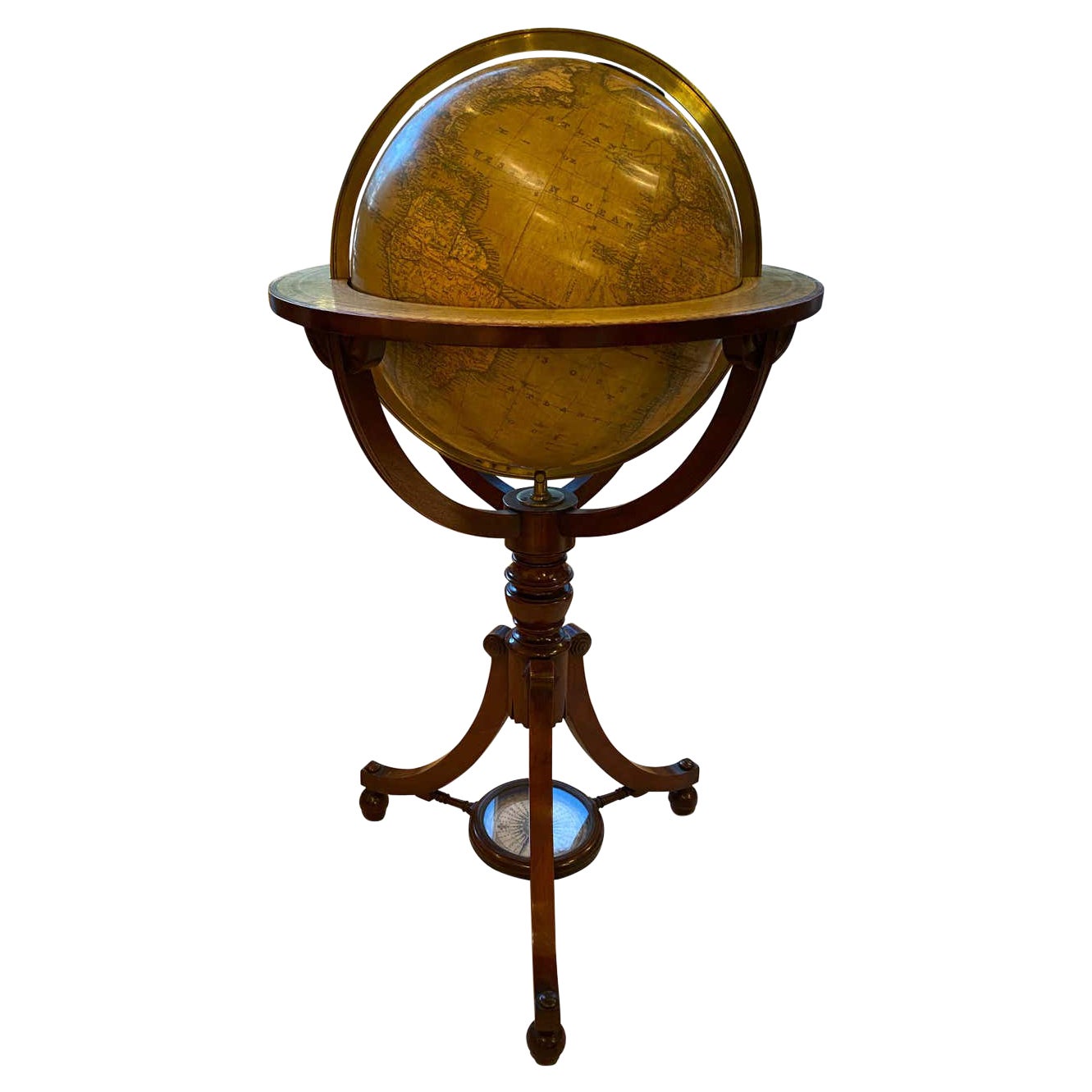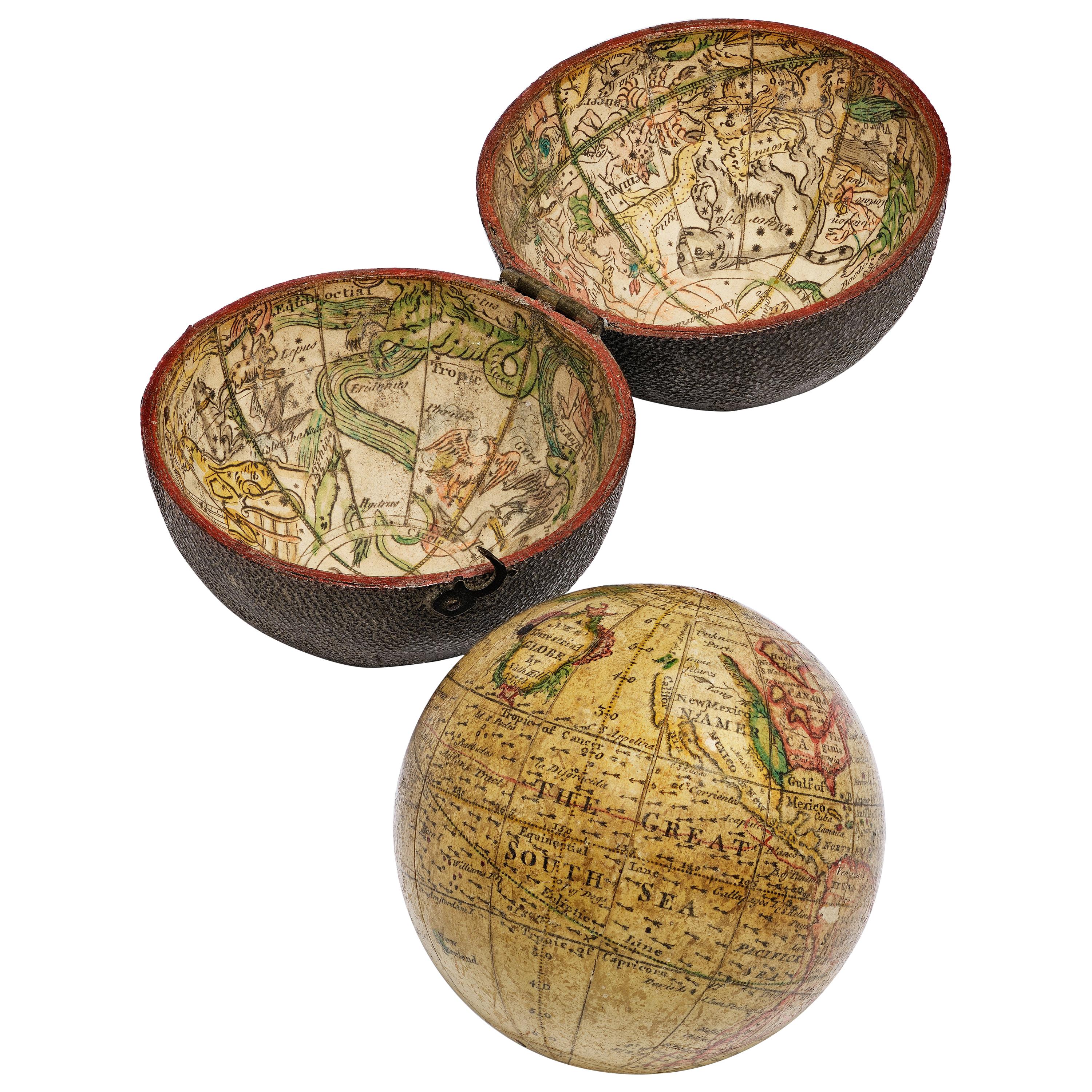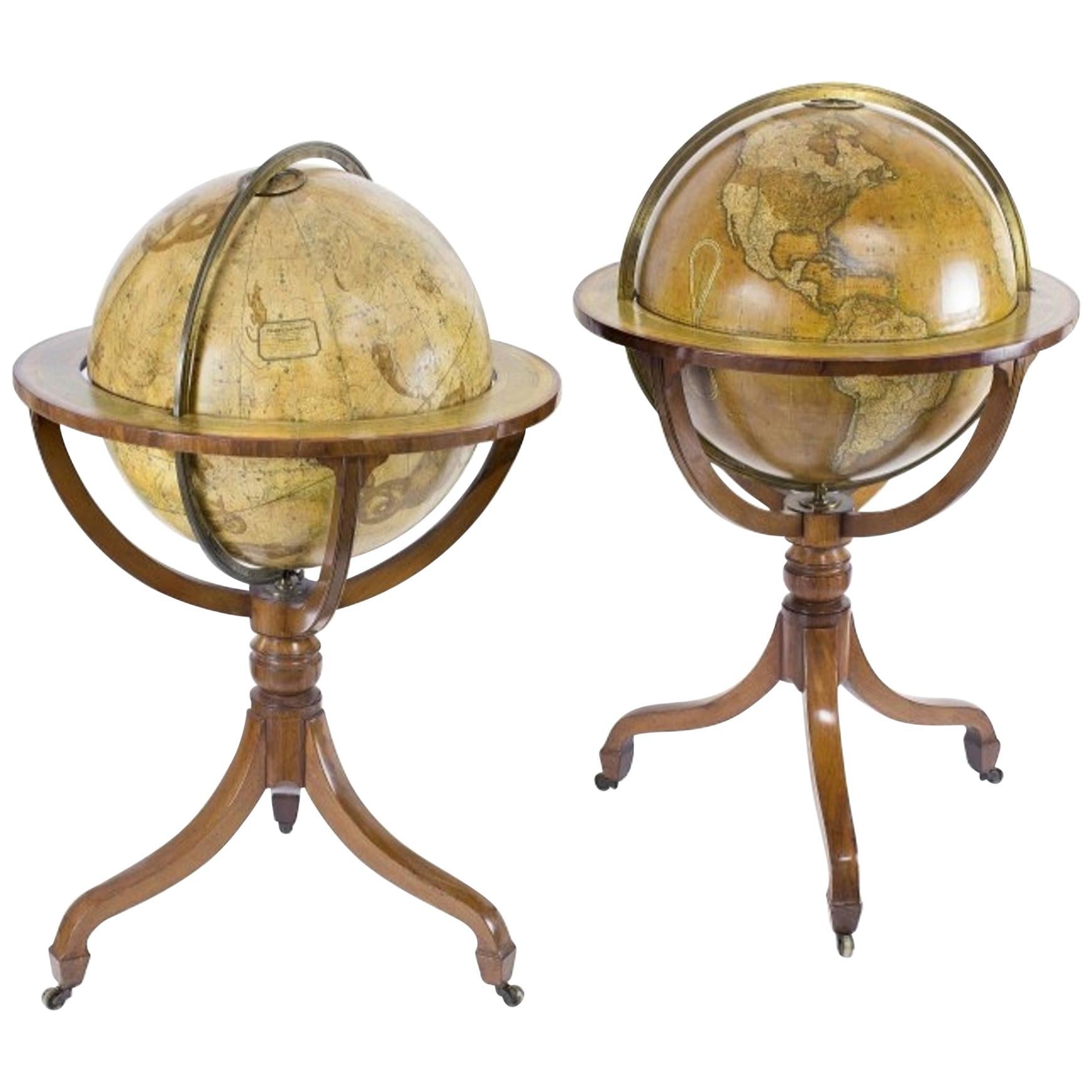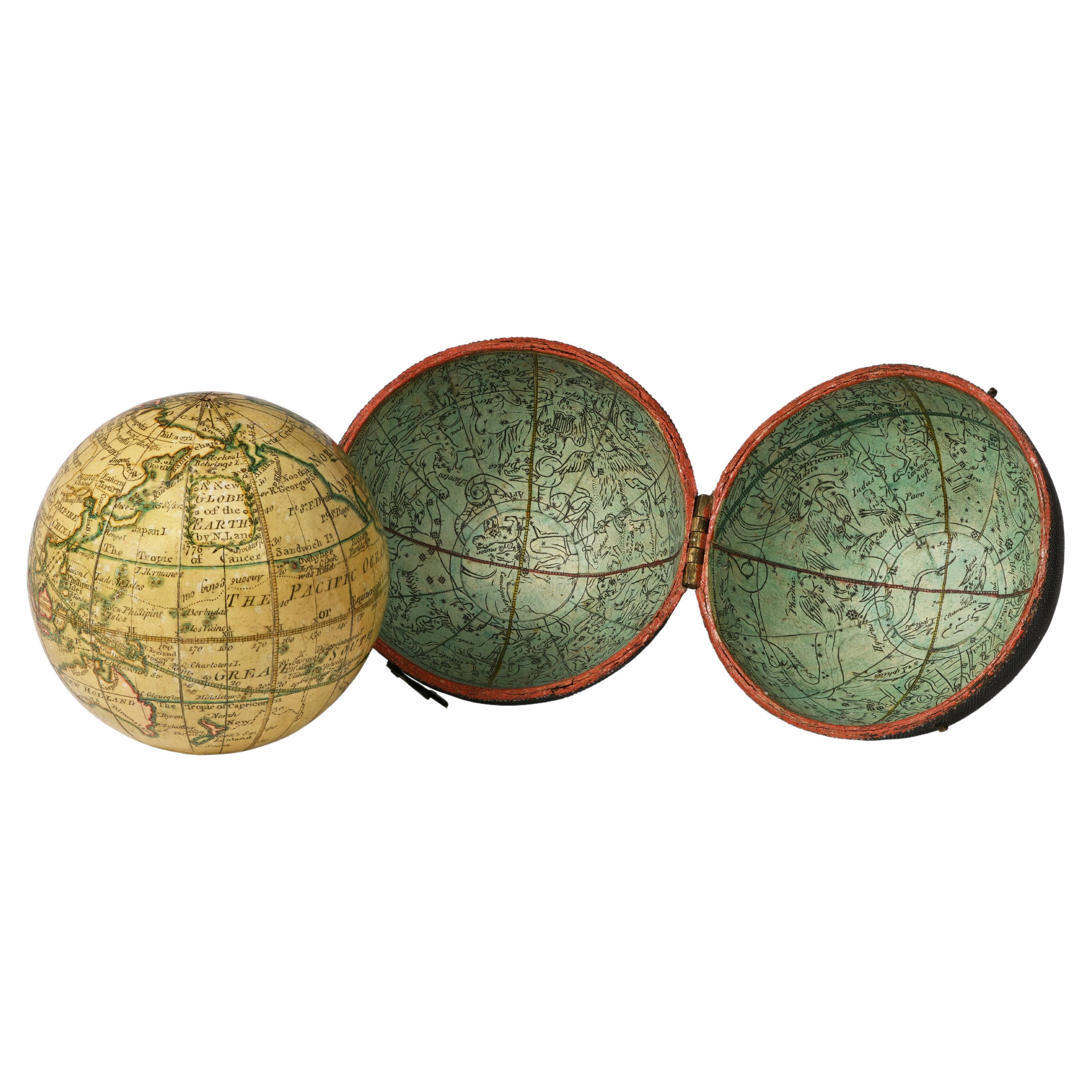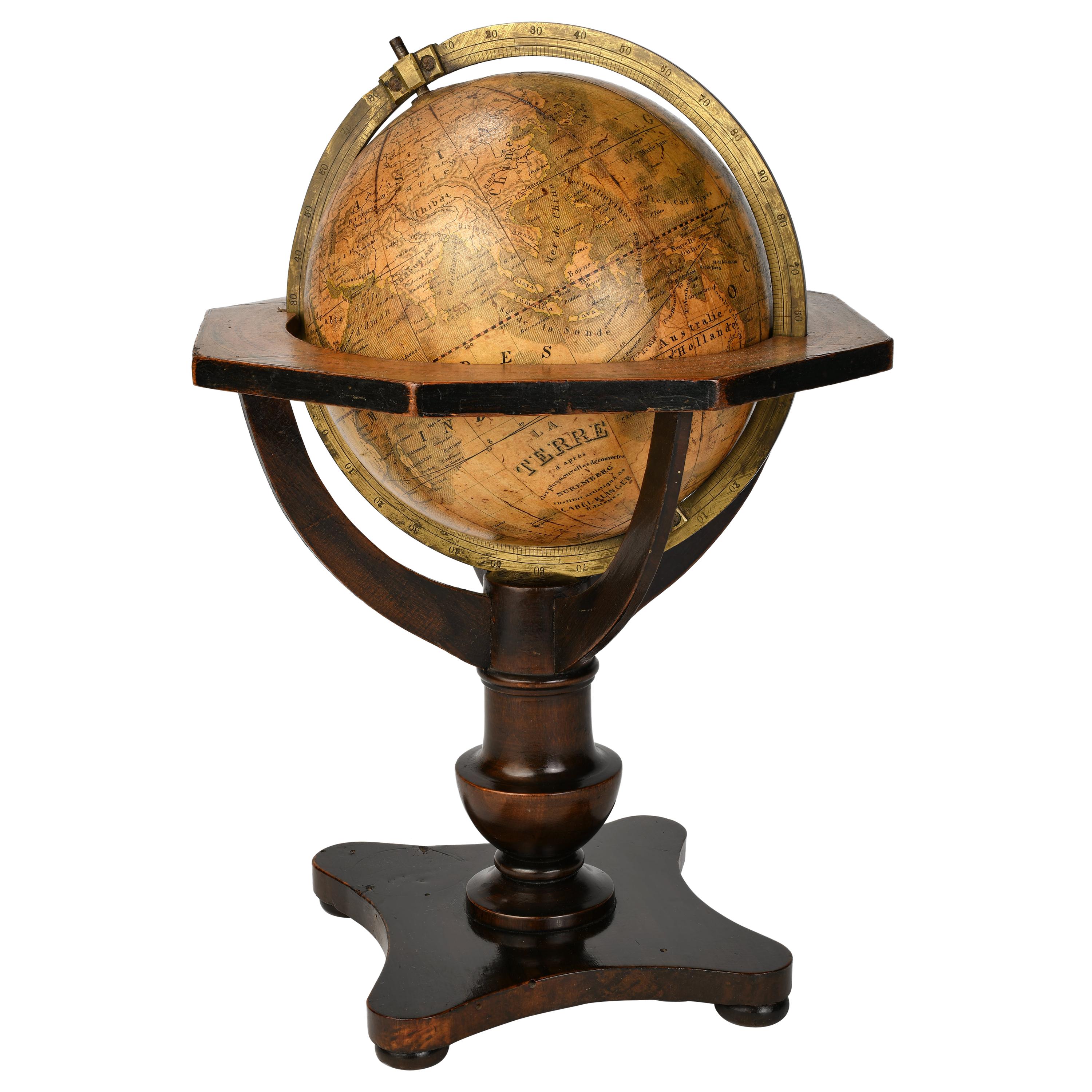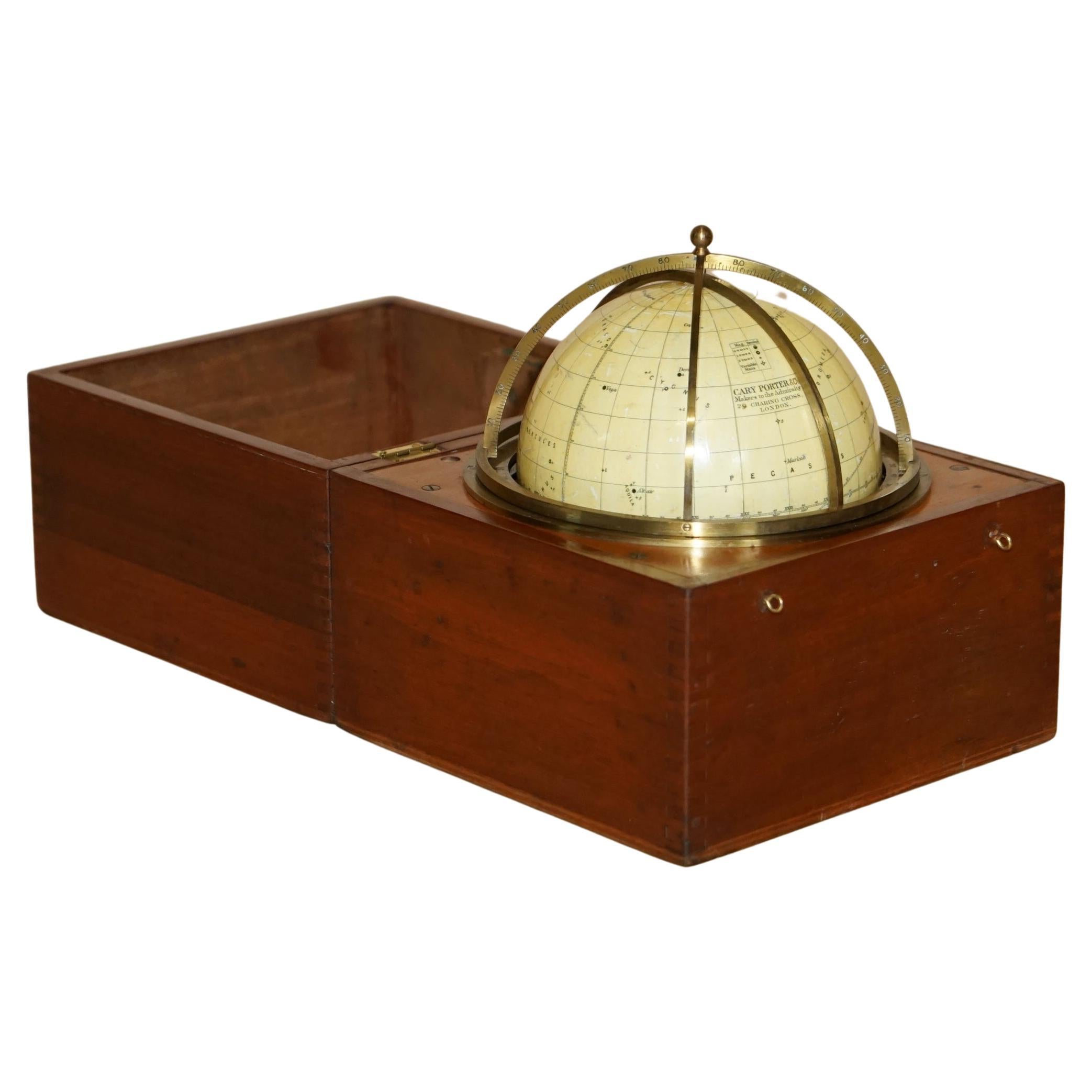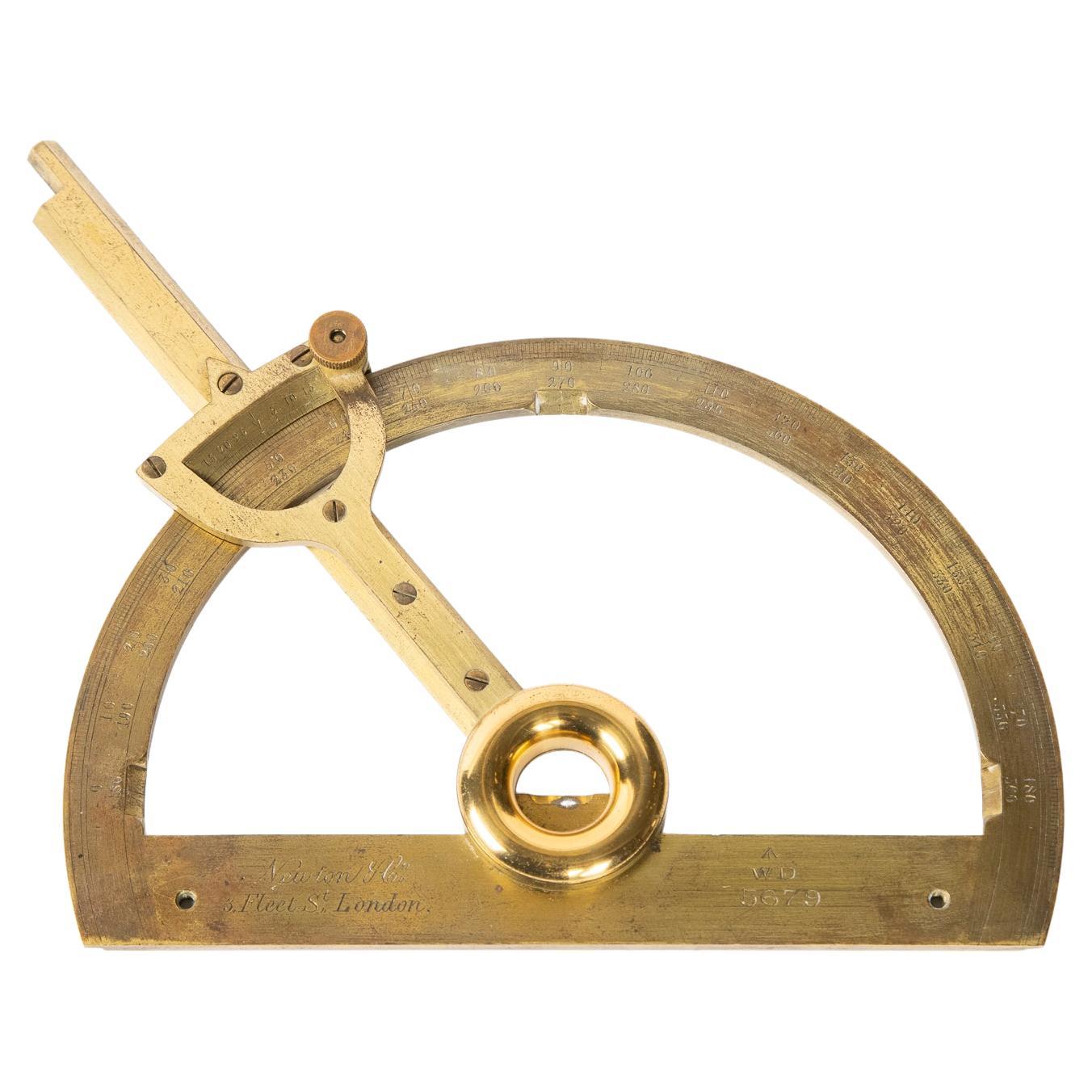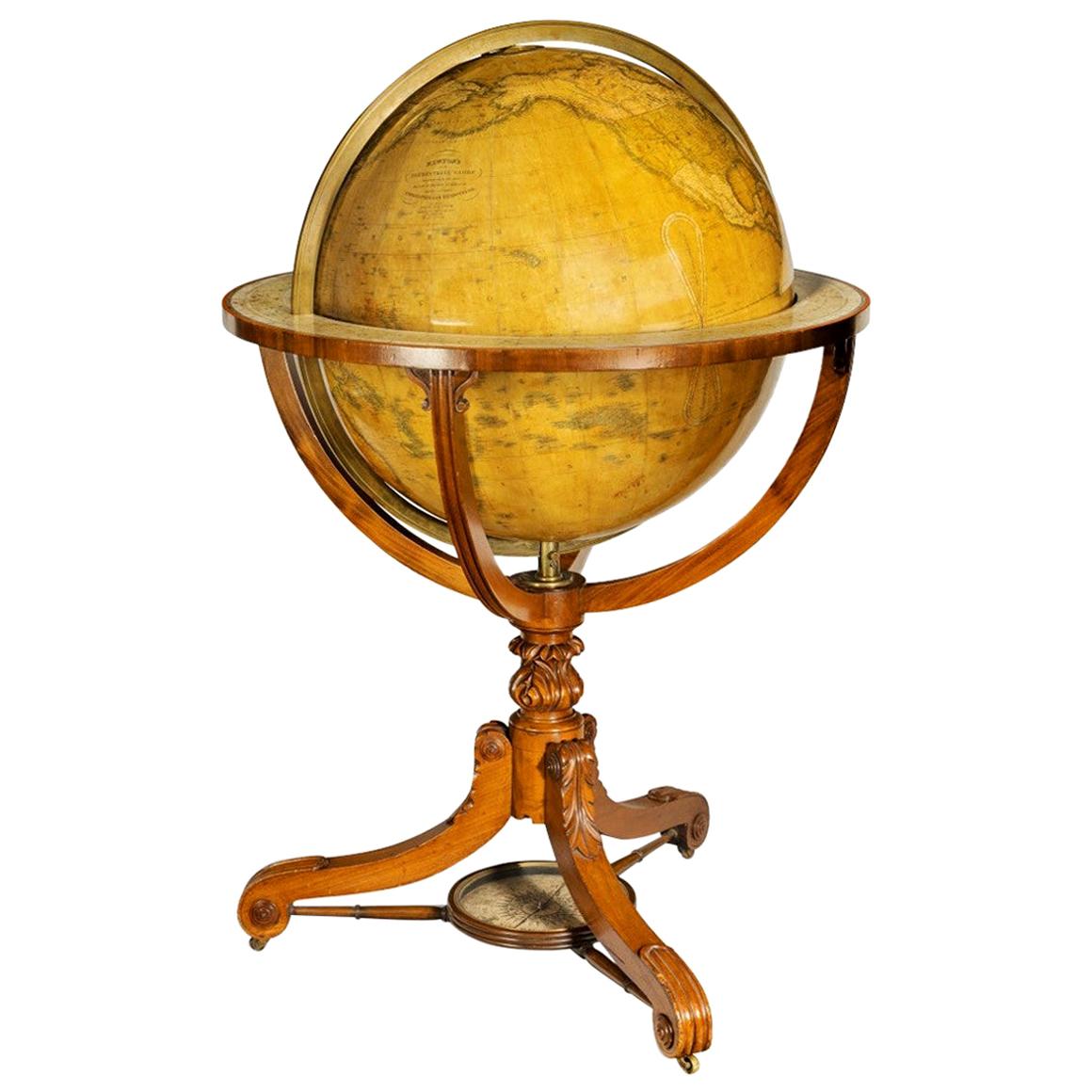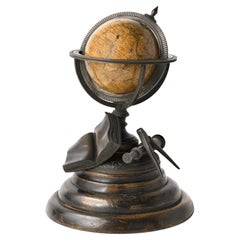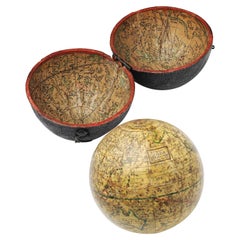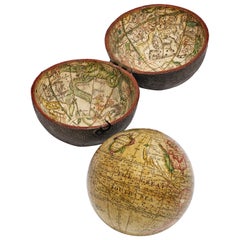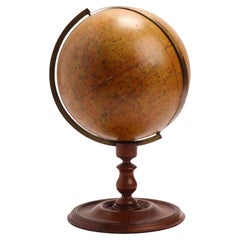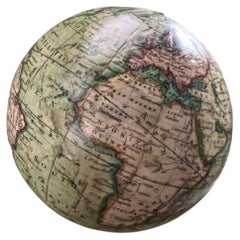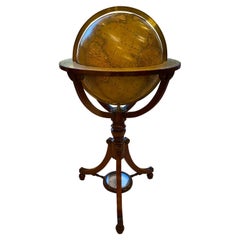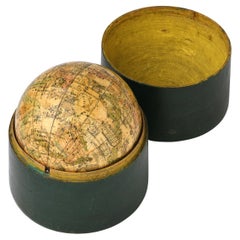
Celestial Pocket Globe by Newton London, 1860 Circa
View Similar Items
Video Loading
Want more images or videos?
Request additional images or videos from the seller
1 of 17
Celestial Pocket Globe by Newton London, 1860 Circa
About the Item
- Creator:Newton and Son (Maker)
- Dimensions:Height: 3 in (7.6 cm)Diameter: 3 in (7.6 cm)
- Style:Victorian (Of the Period)
- Materials and Techniques:
- Place of Origin:
- Period:
- Date of Manufacture:circa 1860
- Condition:Repaired: The sphere has some obvious partially repaired cracks, but its original paint has been maintained. Minor fading.
- Seller Location:Milano, IT
- Reference Number:1stDibs: LU4352226287582
About the Seller
4.3
Vetted Seller
These experienced sellers undergo a comprehensive evaluation by our team of in-house experts.
Established in 1860
1stDibs seller since 2018
19 sales on 1stDibs
Typical response time: 4 hours
Associations
International Confederation of Art and Antique Dealers' Associations
More From This SellerView All
- Miniature Terrestrial Globe Newton & Son London, Post 1833, Ante 1858By Newton and SonLocated in Milano, ITMiniature Terrestrial Globe Newton & Son London, post 1833, ante 1858 Paper, papier-mâché, bronze and wood It measures: sphere diameter 2.95 in (7.6 cm); diameter of the wooden base 6.02 in (15.3 cm); height 8.36 in (21.24 cm). Weight: 2,067 lb. State of conservation: the globe still bears its original paint, but has various small gaps, abrasions and stains on the surface. The globe is hinged with two pins at the meridian circle, which is in turn inserted perpendicular to the horizon circle; this is supported by four semi-arches connected at the bottom by a small goblet-shaped foot, resting on a wooden bell-shaped base. Apart from the wooden base, the entire support structure is made of bronze; on the foot there are the scale reproductions of a compass, a telescope and an open book. The sphere is made of papier-mâché and is covered with twelve printed paper gores. In the North Pacific Ocean the globe bears a cartouche with the inscription (about 30% of the writing is illegible, but the missing parts can be easily integrated based on the rest): NEWTON’S New & Improved TERRESTRIAL Globe Published by Newton & Son 66 Chancery Lane LONDON On the globe, much of central Africa is empty and the great lakes Tanganyika and Victoria are not marked (Europeans would begin to explore the area after 1858). Canada is called "British Territory" and Alaska "Russian Territory" (it would become part of the United States in 1867). Australia already bears its modern name (until 1829 it had been called New Holland) and its coasts are completely designed; Tasmania is listed as an island (Matthew Flinders circumnavigated it in 1798). The routes of Cook's various voyages are plotted; both the route followed by Biscoe in 1831 and the "Land of Enderby" which he discovered on the coast of Antarctica, south of Africa, are marked. Bibliography P. Van der Krogt, Old Globes...Category
Antique 1840s English Early Victorian Maps
MaterialsBronze
- English Pocket Globe, London, Circa 1775-1798By Herman MollLocated in Milano, ITPocket globe London, between 1775 and 1798 Re-edition of the globe of Hermann Moll (1678-1732) dated 1719 The globe is contained in its original case, which itself is covered in sh...Category
Antique Late 18th Century English George III Globes
MaterialsShagreen, Paper
- Pocket Globe by Nathaniel Hill, London 1754Located in Milano, ITNathaniel Hill Pocket globe London, 1754 The globe is contained in its original case, which itself is covered in shark skin. There are slight gaps in the original paint on the sphere. The case no longer closes. The sphere measures 2.6 in (6.8 cm) in diameter whereas the case measures 2.9 in (7.4 cm) in diameter. lb 0.24 (kg 0.11) The globe is made up of twelve printed paper gores aligned and glued to the sphere. In the North Pacific Ocean there is a scroll with the inscription: A New terrestrial Globe by Nath. Hill, 1754. The celestial globe is depicted on the inside of the box. On the terrestrial globe much of central and southern Africa is empty. North America bears only the name of some British colonies. It shows California as a peninsula and the northwest coast of America as "unknown parts" (Alaska is not described and is only partially delineated; it would become part of the United States in 1867). The route of Admiral Anson is traced (1740) and the trade winds are indicated by arrows. Australia, still named New Holland (the new name would be introduced in 1829), is part of the west coast. (See Van der Krogt, P., Old Globes in the Netherlands, Utrecht 1984, p. 146 and Van der Krogt, P. - Dekker, E., Globes from the Western World, London 1993, p. 115.) Nathaniel Hill (London, news from 1746 to 1768) had impeccable professional credentials: he had done his apprenticeship with Richard Cushee, who at the time was carrying out surveying work for John Senex's Surrey map...Category
Antique 1750s English George II Globes
MaterialsShagreen, Paper
- Pocket Globe, Nicholas Lane, London, post 1779By Nicholas LaneLocated in Milano, ITPocket Globe Nicholas Lane London, post 1779 The globe is contained in its original case, which is covered in leather. The sphere measures 2.75 in (6.9 cm) whereas the case measure...Category
Antique 1780s English Other Models and Miniatures
MaterialsLeather, Wood, Paper
- German Globe by C. Abel-Klinger, Nuremberg, circa 1860By C. Abel-KlingerLocated in Milano, ITTerrestrial globe Artistic company C. Abel - Klinger Nuremberg, circa 1860 H cm 31 x 22 cm (12.20 x 8.66 in); sphere 14 cm (5.51 in) in diameter lb 2.30 (kg 1.04) State of conservation: good. On the sphere there are slight visible signs of accidental bumping at the poles, as well as on New Guinea and England (vertical and more visible); some ink stains, especially at the South Pole and on the meridian that crosses North America. The globe is composed of twelve whole gores of printed paper, juxtaposed and glued on a sphere made with a chalky base mixture. The circle of the meridian, made of brass...Category
Antique 1860s German Other Scientific Instruments
MaterialsWood, Paper
- 18-inch Globe, Cary's, London, 1840By Cary’sLocated in Milano, ITJohn and William Cary Updated by George and John Cary Terrestrial Globe London, 1840 lb 22 (kg 10) Slight surface abrasions due to use. A small crack on the horizon circle. The globe rests in its original Dutch style stand with four supporting turned wood columns. It measures 26 in in height x 23.6 in in diameter with the diameter of the sphere measuring 18 in; 66 cm in height x 60 cm in diameter with the diameter of the sphere measuring 45.72 cm. The 18 inch...Category
Antique 1840s English Early Victorian Globes
MaterialsWood, Paper
You May Also Like
- A rare celestial globe edited by J. Wyld, Charing Cross East London 1860.Located in Milan, ITCelestial globe over a wheel turned wooden base, with round foot, moved profile and tall leg, with a perfect patina, is placed this celestial globe, edited by J. Wyld, Charing Cross ...Category
Antique Mid-19th Century English Scientific Instruments
MaterialsCopper
- Newton and Son Pocket Globe and CaseBy Newton and SonLocated in Spencertown, NYThe terrestrial globe is 3 inches in diameter contained within a turned mahogany box with cover. The seas in light green and land masses in darker green. Dimension of Globe 3" Diame...Category
Antique Mid-19th Century English Victorian Globes
MaterialsFruitwood, Paper
- 19th Century English Globe by Renowned Cartographers John Newton and SonBy Newton and SonLocated in Southall, GBAn extremely rare and important 21 inch English globe by renowned cartographers John Newton and Son, one of the most important globe makers of early 19th century England. Representin...Category
Antique 19th Century English Scientific Instruments
MaterialsHardwood
- Newton & Sons Late George III Terrestrial and Celestial Mahogany Library GlobesBy Newton and SonLocated in West Palm Beach, FLFine pair of Newton & Sons late George III 20 inch terrestrial and celestial tripod mahogany library globes, London, second quarter of the 19th century, the terrestrial globe, dated...Category
Antique 1830s Globes
MaterialsWood
- John Cary Travel Celestial Globe in Box Marked Cary & Co London, No. 21540By John CaryLocated in GBWe are delighted to offer for sale this lovely John Cary Travel Celestial Globe in Box marked Cary & Co London, No. 21540 This globe I believe is classed as a 14 inch which is the...Category
Antique 19th Century English Victorian Scientific Instruments
MaterialsBrass
- Vernier Protractor by Newton & Co of LondonLocated in London, GBA mid 19th century brass Vernier protractor by Newton & Co of London. With two screw in fixing points. Signed: Newton & Co 3, Fleet St, London Marked with Broad-Arrow: WD 5679.Category
Antique Mid-19th Century English Scientific Instruments
MaterialsBrass
Recently Viewed
View AllMore Ways To Browse
Zodiac Globe
Pocket Map
Celestial Sphere
Map Of Constellations
Map Of The Constellations
Maritime Map
Zodiac Figures
Pp Bear
Antique Map Box
Antique Celestial Maps
Celestial Maps Antique
Antique Celestial Map
Celestial Map
Model 422
Antique Armillary Sphere Antiques
Antique Armillary Sphere
Armillary Sphere Antique
Celestial Engravings
